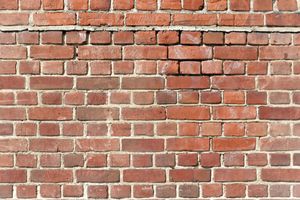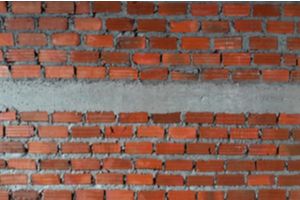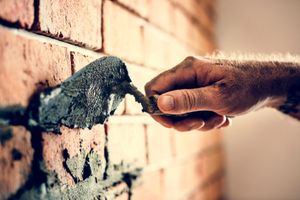Even the best brick structures don’t last forever. Whether your brick building has started to show signs of wear and tear or you simply want to revitalize the look of your brick surfaces, repointing is the go-to option. It can be a time-consuming, detailed and physically tiring task, but if you want to attempt a brick repointing project yourself, here is what you need to know.
Why Repoint Your Brick?

Before you start on your brick repointing journey, be sure you know why you are doing it. Repointing will not fix problems like brick cracks or bulging walls; if these are your issues, you will need to contact a professional for a different approach. However, cracked or chipped mortar-or mortar that is missing-is an indication that it’s time to repoint. When mortar degrades, moisture can seep through. Over time, this moisture can damage the brick and encourage mold growth, or lead to water-damaged walls. Missing mortar also compromises a building’s ability to distribute its weight. If your building can’t distribute its weight properly, you may start to notice damage – and it will only worsen over time. These are the issues that repointing can help with.
Step 1: Remove The Damaged Mortar
If you are going to tackle repointing yourself, the first thing you need to do is remove the affected mortar. A handheld grout saw can help make the process less physically taxing. If you have access to a joint raker, this may also help. Avoid using angle grinders unless you are already skilled at using such a tool – otherwise you risk cutting the brick.
During removal, be sure to wear a respirator at all times so that you do not breathe in harmful particles. Do not remove all of the mortar; retain about half an inch. Similarly, keep your project localized to an area about three feet by five feet in size-otherwise, you are removing everything that is holding your wall together, and it may collapse under the weight. Within your designated area, remove mortar from both horizontal and vertical joints.
Step 2: Keep The Area Moist

Once mortar removal is complete, spray the wall with a hose. Brick is effective at wicking away excess water, so you’ll want to soak the brick to help it better retain the water. Leave it to soak overnight. The next day, lightly spray the brick again to give it one more injection of water before adding the new mortar. Mortar is supposed to be damp, and applying it to dry bricks will suck the moisture out of it and cause it to become brittle as it hardens.
Step 3: Mix The Right Kind Of Mortar
The right kind of mortar for your project will depend on what your home currently uses. Homes older than 50 years use a lime and sand mix, but newer homes can opt for standard portland cement. A professional can help you figure out what type of mortar you need. Once you get to mixing, work in small batches, because mortar dries quickly. Make sure that your mortar’s consistency is similar to that of cake frosting. It’s recommended that you use a wheelbarrow to make mortar application easier.
Step 4: Add The Mortar To The Joints

Next, use a trowel to apply the mortar. It is easier to work in smaller amounts, covering the same area over and over, rather than to fill an entire joint all at once. Even out your mortar as you go, scraping any excess off the bricks before it dries. A pointing trowel is helpful for horizontal joints, but you may get more use out of a margin trowel when you are working vertically.
Step 5: Scrape And Tidy
Once the new mortar has hardened for about an hour, scrape off the remaining excess and tidy up your lines. A wire brush is strong enough to remove crusted mortar, but be careful to make sure to brush gently so that you do not pull the new mortar out. Keep the wall moist for the next few days so that the mortar does not dry too quickly, which can cause it to crack.
Trust The Experts To Tackle A Repointing Project For You
Repointing a building on your own is time-consuming and arduous, but you do not need to tackle this project on your own. The experts at Waterproof Caulking & Restoration are happy to help you determine your brick pointing needs. Contact the pros online or over the phone to set up an appointment and get started on your repointing project.
